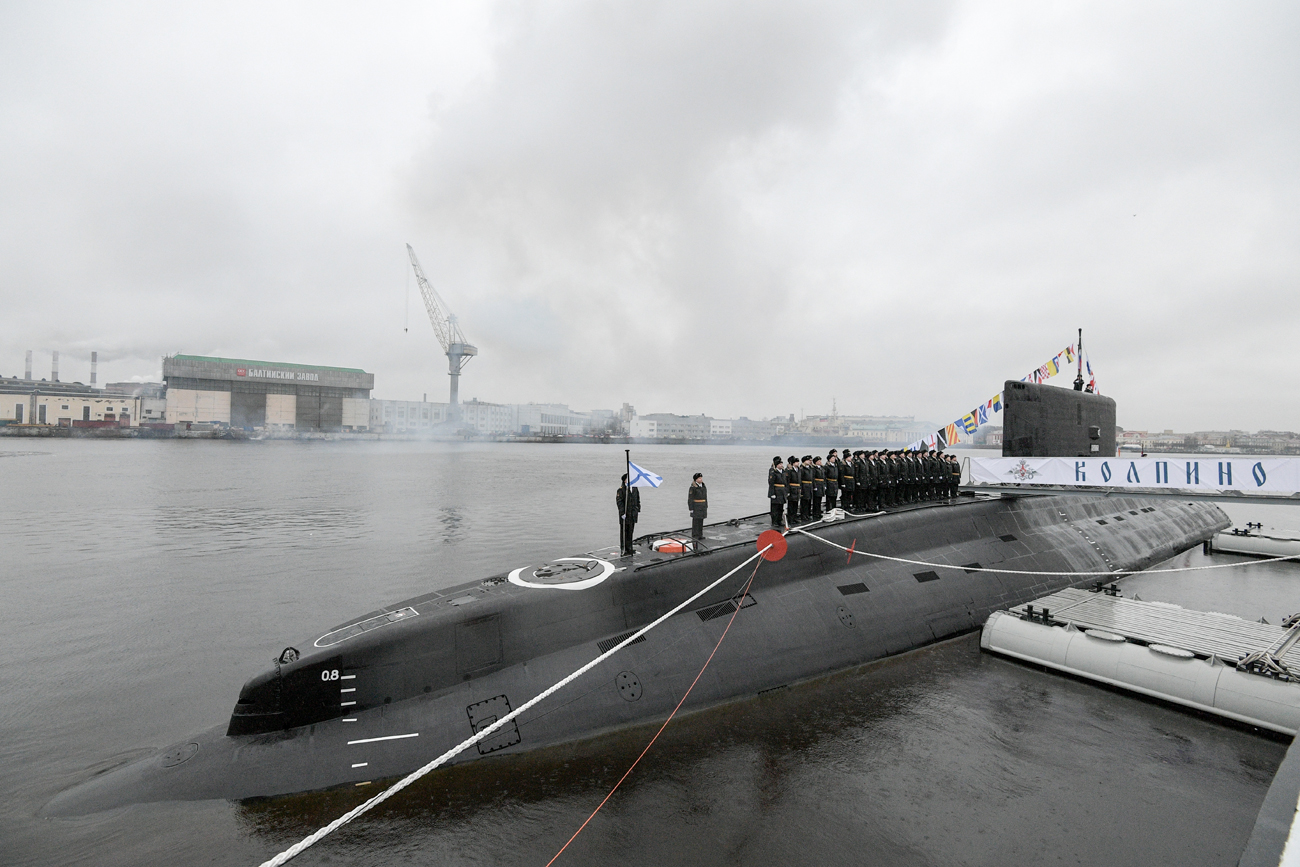
The key elements of the Harmony are the robotic autonomous seabed stations (ASS), secretly installed on the seabed through special submarines.
Alexei Danichev/RIA NovostiThe Russian Defence Ministry has begun to deploy a unique underwater sonar tracking system named ‘Harmony,’ which has the ability to make entire areas of the world’s oceans “transparent”, and “see” all the ships, submarines, and even low-flying aircraft and helicopters located there.
At the heart of this unique system, codenamed ‘Harmony’, are special underwater robotic systems that are launched from a submarine and deploy powerful hydro-acoustic stations on the ocean bed. The information these robots gather is transmitted to the command centre via satellite. According to experts, individual elements of the system are already in operation, and ‘Harmony’ will harmonise their functions and be fully operational no later than 2020.
The Federal Agency for Special Construction (Spetsstroy) began preparations to build special workshops to produce robotic products to monitor the world’s oceans, which would be located in the Okolnaya Bay in Severomorsk. The project was codenamed ‘Harmony-S’.
At the same time, in the village of Belushya Guba on Novaya Zemlya, construction has begun of a new control centre for this system (codename Harmony-NZ). The completion date of this Spetsstroy project has not been revealed.
The main developer of the ‘Harmony’ is the Komet Special Space Systems Corporation (part of the Almaz-Antey Aerospace Defence Concern). The Malakhit Central Design Bureau and the Istochnik Battery Research Design and Technology Institute are also part of this project.
The key elements of the Harmony are the robotic autonomous seabed stations (ASS), secretly installed on the seabed through special submarines.
When in place on the seabed, the ASS deploys a fixed multi-element and hose-type sonar antennas which are many metres long. These stations can conduct passive sonar exploration by simply listening to what is happening around them, trying to detect the characteristic noise components and mechanisms of ships and aircraft. The ASS can also emit a special active beep signal, which detects and classifies surface and underwater targets.
Several ASS combine into a single network to show the entire underwater and above-water situation in an area covering hundreds of square kilometres.
The equipment of the seabed station processes the received sonar information and forwards it to the command centre. For this purpose, the device contains a special pop-up buoy that transmits data via communications satellites.
Power is supplied to the ASS by a unique lithium polymer battery with a control and monitoring system specially adapted to power the consumption needs of the seabed stations. Just over 30 cm long, the nominal capacity of this battery is 28 A/h, and the nominal voltage is from 58 to 80 volts. This power source can operate at temperatures ranging from -10 to +45 degrees Celsius.
On a command from the control centre, all the ASS antennae can collapse and lower the communications buoy and return to the submarine.
“These autonomous seabed station robots can be launched by the Sarov special purpose submarine,” said Dmitry Kornev, chief editor of the Internet portal Military Russia. “There has been repeated talk that the Sarov was testing some kind of underwater robots. Judging from the photos of this submarine, it is loaded with many-metres long cylindrically shaped objects which, after the testing finishes, are picked up from the seabed using special deep-water grippers from the ship ‘Zvezdochka’. Most likely, in the future, the diesel submarine Sarov will be replaced by the nuclear-powered Belgorod and Khabarovsk, the construction of which began not too long ago. These submarines, along with the Sarov, have also been mentioned several times in the media as being designed to carry underwater robots,” he said.
The Khabarovsk, a Project 09851 submarine, was founded in July 2014 at the Sevmash Shipyards in Severodvinsk. This sub should join the Russian Navy no later than 2020. Being rebuilt from a missile-carrying project 949 submarine (sister ship of the Kursk, which sunk in 2000), the project 09852 submarine Belgorod will join the Russian Navy either at the end of this year or early next year.
“The ASS are quite expensive products. Therefore, they will be made reusable,” said Dmitry Boltenkov, a military historian. “A special maintenance department is needed for them, where they will not only replace the batteries, but check the operation of the entire complex of electronic systems, as well as the mechanical assemblies and mechanisms of the station. The slightest malfunction, and the expensive ASS will be lost,” he said.
This maintenance and preparation work on the robot stations will be done by Russian Navy experts at the Preparation of Robotic Products of the Global Ocean Monitoring System Workshop, located at the 77360-H Military Base on Okolnaya Bay in the North Sea.
This workshop is in a building 80 x 80 m in size. In addition to sites for storage of bulky objects, this workshop has its own boiler plant, power plant, sewage treatment system, and storage tanks for fuel oil. For security, the workshop has a checkpoint, an observation tower, stands for checking the machines, and a guardroom.
The control centre of the ‘Harmony’ is being constructed at the 77510 Military Base (Novaya Zemlya), which is a more modest building 48 x 18 m in size. In addition to the main building, there is storage area for five cars and a checkpoint.
First published in Russian by Izvestia.
All rights reserved by Rossiyskaya Gazeta.
Subscribe
to our newsletter!
Get the week's best stories straight to your inbox